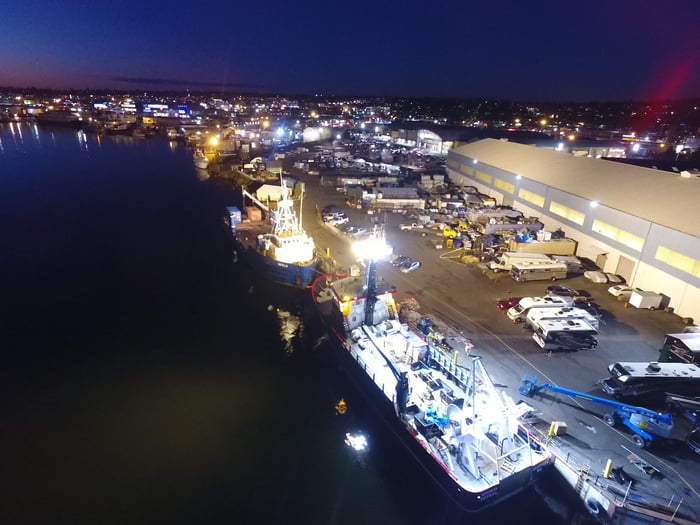Table of Contents
This is a Post republished with permission from Jim Dilbeck, GM of Cireon. Cireon is our manufacturer of choice for our commercial lighting applications - where our customer asks us for a lighting option for their parking lots or lowbay lighting, and doesn't need our typical Waterproof, Heavy vibration fixture solution. Cireon too, is an American made product, with a 10yr industry leading warranty. We enjoy partnering with Cireon because they design and manufacture with the same ideology as ours towards proper design, materials, and technology.
Over driving LED fixtures is something we see all too often in Heavy-Industry LED applications as well. In fact, we've been able to identify one competitors fixture just from the heat it produces through its chassis. We couldn't read the manufacturer label with the light on, but we knew from the heat it gave off. In the immediate, almost all LED lights look bright and illuminate well. Taking photos of your installation after initial install, again in 3 month increments for the next 1-3 years will help identify any degradation in the illumination, a by-product of over driving the fixture.
Within Industrial applications and environments Safety is the heart and core of the operation. Lights that prematurely degrade because of over-driving the unit, degrades the illumination output and puts at risk operator safety.
Feel free to contact us with any questions regarding any Cireon product - we can even provide before and after application pictures.
______________________________________________________________________
"It’s Physics – Not Magic
With TV acting, less is more.
With political rhetoric, more is more.
With drive current in LED luminaires,
more is definitely less.
Drive current is the amount of amperage being sent from the power supply through the LED array. A widespread trend is increasing drive current to increase luminaire output without increasing its purchase price. Sound too good to be true? It is.
Increasing current increases light output but it also increases heat – and heat is the enemy of the LED. Increased heat accelerates light loss and color shift. In many designs, the power supply also sees a shortened life as it too is subjected to the increased heat of the LED array.
Still, amping-up is the industry trend and, to truly understand the true benefits and drawbacks, we’ve done extensive research and built numerous prototypes to evaluate the reality of higher drive currents.
We recently measured the effect in increasing one of our 292W products to 438W. This rendered an increase from 28,000 to 35,500 lumens with zero increase in unit price. Such a deal! Well, we certainly could have sold it that way.
Even with Cireon’s industry leading thermal management, the increased LED temperature rendered a product that (using Lumileds LM-80 data) would have had 58% of the hours to 70% output. We could not in good conscience bring that product to market.
Ignoring this, our competitors are running their products at 1.5x to even 2x our maximum drive current while having nowhere near our thermal capacity to begin with. Their warranties say nothing about lumen maintenance but instead note the percentage of “operational LEDs.” The product could be producing one lumen but, as long as a certain percentage of LEDs are operational, it’s not a warranty item.
It’s only a matter of time before the repercussions of overdriven products lead to premature repairs and replacements. In this buyer beware market, despite being lower in initial price per lumen, high drive current products are far from the bargain they seem on paper.
It’s Physics – Not Magic. You can check our math below to see for yourself.
CHECK OUT MATH:
Using one specific LED as an example, at 60Khrs, the Lumileds Luxeon TX degrades to 94% output at a temperature of 85℃, compared to 83% at 105℃1). That’s triple the degradation with a 20oC increase in operating temperature.
So the obvious question becomes how much an increase in drive current increases LED operating temperature.
Using a Cireon 146W product as an example, where lab testing measured junction temperature at 89℃ in a 25℃ ambient, the thermal resistance of this 146W product is calculated as:
(89 – 25)/146 = 0.438
Thermal resistance is a constant. Therefore, to solve for LED temperature, an increase in drive current from 700mA to 1050mA (a 219W engine) renders:
(x – 25)/219 = 0.438
Therefore, x = 121℃
If a 20℃ increase in LED temperature triples the degradation rate, what is the rate at 32℃?"



